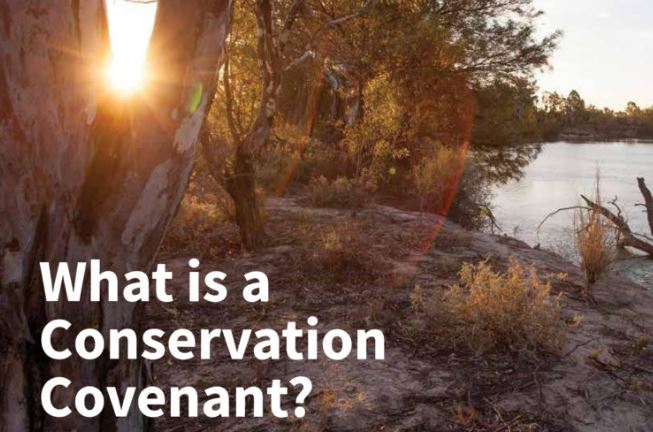Across Victoria, Trust for Nature works with landholders to protect and improve habitat on private land.

Conservation covenants
The ultimate form of habitat protection on private land in Victoria is a Trust for Nature conservation covenant, which is a legally binding agreement with landowners. Its purpose is to permanently conserve and protect the natural, cultural or scientific assets of the land. This agreement is voluntary and negotiated between Trust for Nature and each individual landowner. Once agreed, the covenant is registered on the title and protects habitat forever. Our Stewardship Program allows Trust for Nature to work with landowners to improve the condition of the covenanted habitat. For more information, download our frequently asked questions.

Finding and applying for projects on your land
In some areas, these types of activities may be partly or fully funded by grants from the Victorian or Australian Government. In other areas, landholders can engage Trust for Nature themselves for assistance with managing biodiversity on their land. We are a not-for-profit organisation, and this is reflected in our service fees.
If you have on-ground works that you would like to achieve on your property, contacting the local Trust for Nature manager in your region is a good place to start a conversation about what types of financial support might exist to be able to improve habitat on your property. Our focus is on properties that fall within Trust for Nature’s priority areas, which are detailed in our Statewide Conservation Plan. Properties with habitat for threatened plants and animals, or threatened ecological communities (such as native grasslands, woodlands or wetlands) are prioritised.
Property services
Do you need help in identifying the plants and animals on your property? Trust for Nature’s conservation officers can undertake flora and fauna assessments of your property. These assessments will tell you what the key biodiversity features of your property are, and this information can help inform your choices about siting new buildings or making decisions about land uses.
Our staff are experienced in Geographical Information Systems (GIS) and can create mapping solutions from field data collected during assessments on your property, or from databases and existing landscape-scale maps to provide desktop studies of the biodiversity features on your property.
Trust for Nature works closely with Catchment Management Authorities and the Department of Environment, Land, Water and Planning to attract funding for revegetation projects on private land within our priority areas, especially where revegetation supports the recovery of populations of threatened plants and animals.
A key element of habitat restoration is planting new trees, shrubs, grasses and herbs, which can either supplement the existing native vegetation in an area, or restore habitat to an area which is currently devoid of native vegetation. When planning to plant trees and shrubs, the selection of plant species can be really important to ensure food resources are available all year round for threatened animals with particular dietary needs.
Regularly surveying areas of habitat is important to understand what is happening in nature. Trust for Nature’s staff can help you learn how to survey your property – this could include using photopoints to show changes over time, remote trail cameras, or keeping records of the animals you see on your property. Trust for Nature’s conservation officers also undertake a range of other scientific survey methods for projects in our priority areas, including monitoring plants using transects or quadrats, and surveys for threatened animals using a range of specialised techniques including catch-and-release trapping, and nocturnal spotlighting.
Please note that landowners may require permits for some types of monitoring – Trust for Nature holds these relevant permits for all the work that we do.
Pest plant and animal control programs are most successful when they are coordinated between neighbouring properties, which is why Trust for Nature collaborates with Catchment Management Authorities, Parks Victoria and the Department of Environment, Land, Water and Planning to plan and deliver pest plant and animal control programs that work jointly across private and public land. We focus our efforts where these programs actively support the recovery of populations of threatened plants and animals.
More tips for monitoring
In Victoria, an offset site compensates for biodiversity losses arising from native vegetation removal under the state Native Vegetation regulations or the Commonwealth Environment, Biodiversity Protection Conservation (EPBC) Act.
Landowners can generate offset credits through protecting and enhancing sites with native vegetation by using a Trust for Nature covenant and an associated offset management plan. Trust for Nature’s offset covenant is one of several ways to protect and manage native vegetation to generate these credits.
For more information or to discuss the program further, please visit our offsets resources page or contact our Offsets team on (03) 8631 5888 or offsets@tfn.org.au.


